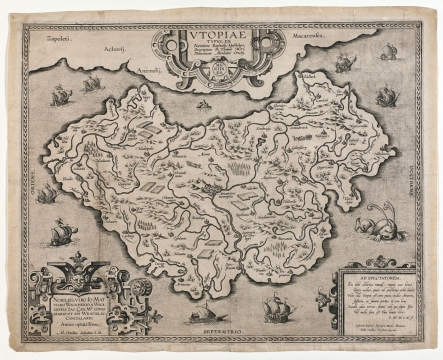Abraham Ortelius
c. 1595–1596
Type:
Map
Material / technique:
Copper engraving
Dimensions:
380 x 475 mm
Type of acquisition:
Acquired by the Charles Vreeken Fund
Year of acquisition:
2018
Depository institution:
Plantin-Moretus Museum, Antwerp
